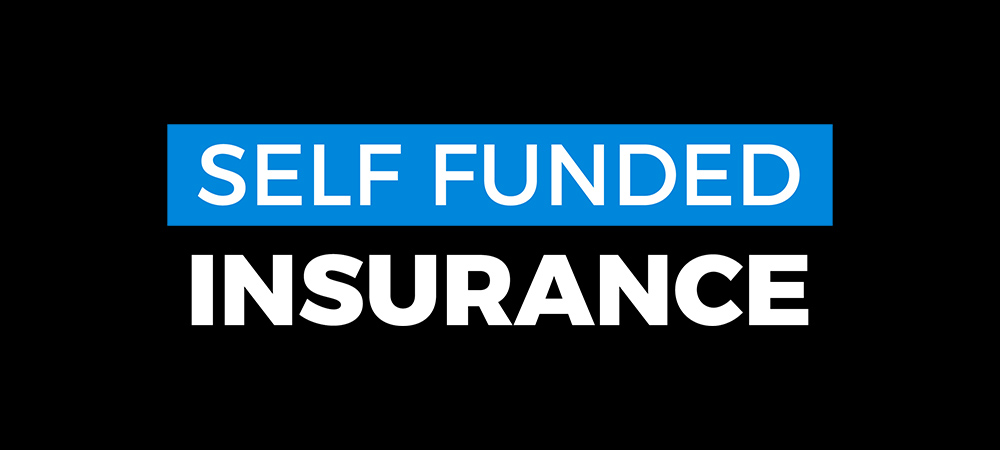
Exciting Opportunity for Savings in Employer Sponsored Health Care Plans

"How are we going to afford to provide health care for our workforce and their families in 2021."
Businesses of all sizes are asking, "How are we going to afford to provide health care for our workforce and their families in 2021 in the setting of increasing costs, COVID19, and economic downturn?". In 2019, there was a 6% increase in healthcare costs. That's on top of the 5%-6% annual increase in premiums since 2014. This inevitable upward trend is not going to stop anytime soon. As we pointed out in our previous post, Spike in Health Insurance Costs Could Have You Looking For Alternatives, traditional healthcare premiums could spike by double-digits as a result of the chaos COVID-19 has created.
As rising healthcare premiums continue to hit the bottom-line of both owners and their workers, employers continue to grapple with some tough decisions. In particular, some companies may think they have to decide between providing comprehensive health insurance for their employees, and the financial health and bottom line of their business. The problem seems unsolvable: either pay increasingly higher premiums to insurance companies and risk becoming financially insolvent or cut employee health benefits in a time of crisis. Depending on the number of employees, many businesses don't even have that choice since they are required by the Affordable Care Act (ACA) to offer health insurance or face penalties.
However, there are solutions that give businesses opportunities to control costs without negatively impacting the health of their employees.
Self-funded insurance is one of them. Even if a company is already self-funded, there are opportunities to slash health care costs and dramatically improve care for its workforce.

What is Self-Funded Insurance?
With a self-funded insurance arrangement, the business cuts out the insurance company middlemen.
Instead, the company itself assumes the role of the insurer. Rather than paying a monthly fixed premium to an insurance carrier for a fully-insured plan, the business itself can fund and operate its own health plan. When an employee has a health claim, the company pays the claim instead of an insurance company. If there are fewer claims in a given month, a self-funding company can realize real financial gains. At the end of the year, there may be a surplus of funds if the money put in by employees, and the employer exceeds money paid out to settle medical claims.
This is a far cry from the fully-insured plans with which many businesses are familiar.
With a traditional carrier plan, the employer pays a fixed insurance premium to an insurance provider, which goes into a large pool of money to pay claims across a group of employers. The claim bills are processed and paid for by the insurance company according to each company's plan. At the end of the year, surplus premiums are never refunded back to the companies. Instead, that extra money is taken by insurance companies as profit.
So what's the real difference between employer-funded insurance and traditional insurance plans?
After all, claims have to be paid one way or another – either through premiums to insurance companies or through payments to a company's earmarked health care fund.
The key difference is the amount of control a company has over the funds.
With a traditional plan, premiums paid to insurance companies include a built-in profit margin since the insurance company expects to reap a middleman profit (i.e., premiums received over the amount of all claims billed). As healthcare costs go up, the premiums increase because insurance carriers want to maintain or even increase their profit margin. In other words, insurance carriers have no reason to keep premiums reasonable as long as businesses continue to pay.
In contrast, with a self-funded plan, employers do not have to pay extra to pay an insurance carrier's profits, and in fact, they have tremendous opportunities to hold down costs and provide better care at the same time.
Traditional Insurance Premiums Lack Transparency
Under a traditional plan, all the companies in an insurance risk pool are lumped together. However, no one company has an idea of what the other companies are paying for the same plans and coverages. A company may be paying for services that would never apply to it. Companies with a majority of young and healthy employees, for example, may be subsidizing other companies in their risk pool with older or less healthy employees. In fact, that's precisely how risk pools work.
Companies operating in an insurance risk pool could also be paying for other things they will never benefit from, such as the marketing costs of selling the plan to other companies. Even worse, certain taxes, such as state premium taxes of 2-3%, are also built into premium costs. With a self-funded plan, you can avoid all these extraneous costs altogether.
Under a self-funded plan, employers can have total transparency and total control over their fixed costs. They can choose to administer the claims in-house or shop around and subcontract services to a third-party administrator (TPA). The traditional insurance companies have often served as TPAs for these plans, but the same lack of transparency applies when they do. Self-administration or contracting services to independent TPAs can be more cost-efficient options. Self-funding businesses can negotiate provider network contracts and customize health plans to include more preventive care.
Better yet, with careful planning and plan management, healthcare costs can be lowered substantially.
Is Self-Funding Right for Your Business?
Self-funding can be enormously beneficial for any business. However, it is important to keep in mind that under a self-funding model, the company, not the insurance carrier, assumes all the financial risk. What happens in the event of unpredicted, "high dollar" catastrophic claims? This is especially concerning for small businesses as larger companies have the advantage of being able to spread the risks across a more significant payroll and more substantial cash reserves. Catastrophic claims could potentially cripple the financial health of a company with a limited number of employees or no inbuilt cash reserves.
Despite this potent drawback, an Urban Institute study suggests that businesses are warming up rapidly to the idea of self-funding. Furthermore, something called partial self-funding can be a great first step for companies looking to move away from a traditional health insurance plan. Under a partial self-funding plan, a business purchases stop-loss insurance from a stop-loss carrier.
Stop-loss insurance reimburses a business for claims above a specified dollar level. This hedges the financial risk for smaller operations who may not have sufficient cash reserves on hand to cover catastrophic claims. In many ways, stop-loss insurance for companies acts very much like high-deductible (HDHP) catastrophic insurance for individuals. It won't cover anything below a certain amount. Typically, this threshold is too high for a company to rely on to cover the expected medical expenses of its employees in any given year. However, in the event of a health catastrophe, such as a viral pandemic that sickens a number of their employees, stop-loss insurance would limit a company's total healthcare liabilities.
Purchasing stop-loss insurance does mean a business would have to pay a monthly premium to a stop-loss insurance carrier. However, the monthly premiums for stop-loss coverage are significantly cheaper than traditional health care premiums. Better yet, stop-loss insurance is not considered to be a health insurance policy. As a result, stop-loss premiums generally are not inflated to cover the fees and taxes legally required for health insurance policies.
With partial-self funding, businesses can enjoy the economic benefits of self-funding without sacrificing financial safety and predictability.
5 Reasons Employers Are Switching to Self-Funded Insurance
As stated above, businesses that adopt a self-funded health plan can lower their monthly healthcare costs and also retain more control over where their healthcare payments go. Following are the 5 most common reasons employers are switching to self-funded insurance:
1. Cost savings

Self-funded plans come with many cost savings that are advantageous to a company's bottom line. Premiums paid to insurance carriers cover not just the cost of healthcare and the risk of high-cost surprises; premiums also cover the built-in cost of taxes, administration fees, marketing expenses, and of course, a healthy profit margin. With self-funded plans, companies still have to pay claims and incremental costs (e.g., TPA contract, stop-loss insurance premiums), but these costs tend to be lower overall. Furthermore, they have complete control to shop around and negotiate contracts most beneficial for their company.
2. Better cash flow

Companies that adopt self-funded plans do not have to pre-pay for coverage upfront. Instead, claims are paid out as they come in, which frees up the company's cash flow for other uses. These claims are not affected by anyone outside of your company's pool of covered individuals. Thus, if your workforce is very healthy, then self-funding may be ideal. A healthy workforce is not likely to utilize claims which free up that money to be spent elsewhere, such as improving your company's core business, hiring talent, or making significant capital investments.
3. Potential benefit from savings

When traditional premium payments are higher than the actual amount paid out in claims, the insurance company pockets the difference as profit. Employers and employees do not get their unspent premiums "refunded." Nor do health insurance companies lower rates the following year. But, self-funded insurance plans allow employers to re-deploy unspent funds to better uses such as expanding employee benefits, reducing contributions going forward, or increasing coverage.
4. Customized plans

With traditional health care plans, your company is just another drop in a massive risk pool of other companies. Companies in one market sector or industry might be pooled with companies in different, riskier fields.
Since risks are shared, one-size-fits-all plans are often the norm.
Many needs are industry-specific. A best-case healthcare plan for a large construction firm with many employees working in potentially dangerous conditions may look much different than the ideal plan for a tech startup.
Savvy companies that choose to self-fund can gather and analyze fine-grained claims data to continuously monitor and improve their own plan. A self-funding company could, for example, decide to focus more on preventive care and wellness as a result of surveys showing that this is the ideal approach for their employees.
With self-funding, businesses can customize health plans based on the needs of their employees. Companies have more control and can select the coverage and network of providers most suitable for their workforce.
5. Reduced premiums for employees

Retain and attract talent.
Self-funding plans can easily distinguish one business from another. Good healthcare plans are one of the top benefits employees look for when deciding where to work. Your company can cut through the noise and stand out simply by adopting a self-funded insurance plan that speaks to the needs of the talent you are trying to attract.
Companies can even pass on the savings to their employees by reducing the amount they collect to fund healthcare. With a tailored health plan, employees and employers alike can see exactly what they are getting for what they are paying.
In these unprecedented times, many companies are taking an in-depth look at their finances, especially their healthcare expenses. As healthcare costs continue to rise, many may have to face the impossible decision between maintaining financial viability and providing comprehensive employee health benefits. Self-funded insurance may very well be a potential solution for both controlling health care costs and retaining valuable employees. In uncertain times, self-funding might be the difference between survival and financial insolvency.
We at Green Imaging are providing savings for more than 100,000 covered lives in self-funded health plans nationally, and that number grows almost daily. We saved a client $230,000 in 4 months on a CT and MRI alone, and that was a small fraction of the imaging performed. We are in a unique position to identify the best in class solutions out there for self-funded employers. Please feel free to contact me at drdickerson@greenimaging.net if you want to explore options.


DR. CRISTIN DICKERSON, MD

















